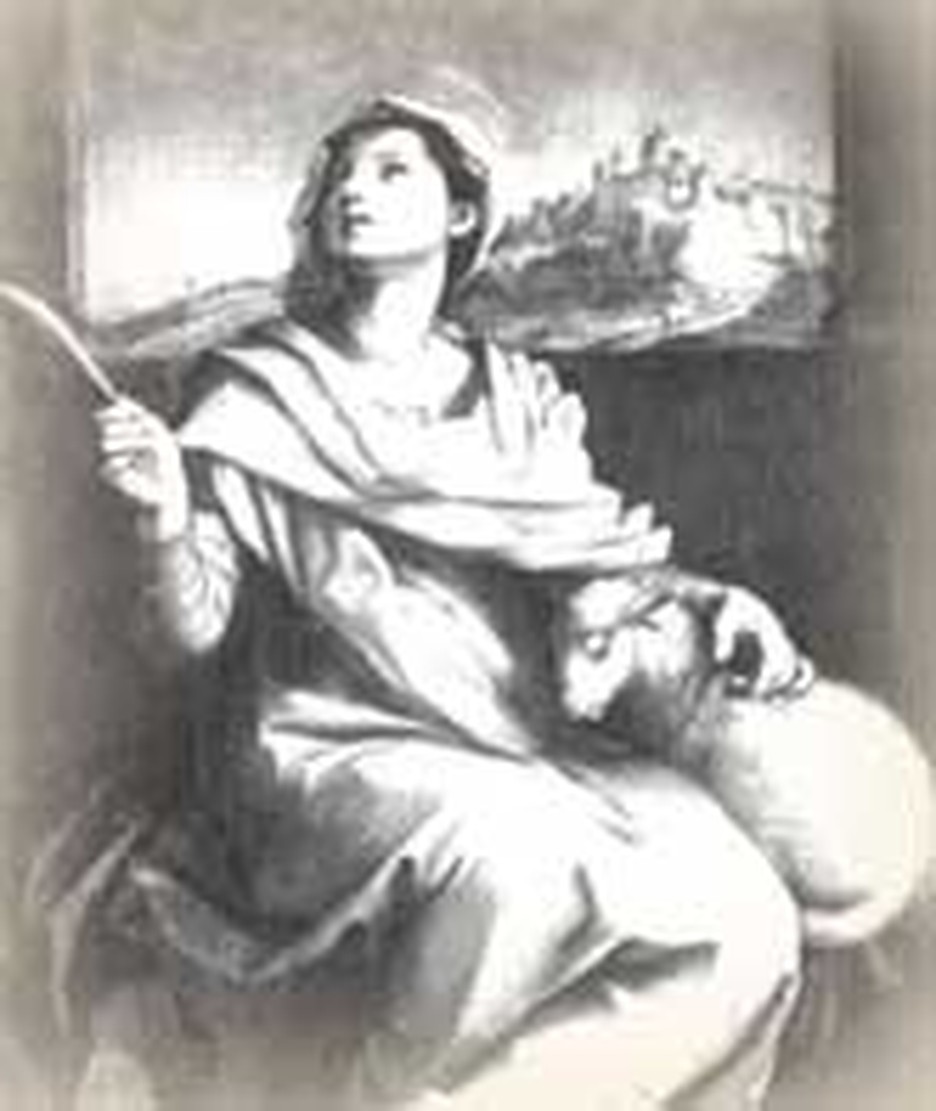
Christ has the power to turn even a young teenager into a heroine. Agnes (also known as Ines) was just twelve or thirteen when she was dragged before a Roman judge. The accusation against her was that she was a Christian. It seems that she came from a well-to-do family and that several youngsters from noble families looked at her as a prospective mate. In those days of youthful marriages, she was not considered too young. However, she rejected all proposals. In anger, one of the rejected boys denounced her to the authorities.
Aat that time, the dreadful persecution of Diocletian raged. Tens of thousands of Christians suffered for their faith all across the Roman Empire. The pagans were determined to break Christians to their will.
A wicked judge ordered Agnes to sacrifice to the pagan gods. She was hauled before idols, but instead of pouring out libation, she made the sign of the cross. Furious, the judge threatened her with fire or torture on the rack. Agnes said she welcomed torture. She meant to remain pure for Christ.
Tradition says that the exasperated judge then tried to break her by throwing her into a public whorehouse. At the very least, he embarrassed her by publicly stripping her naked. Ambrose of Milan (who lived in the same century) mentioned this in his writings. In spite of everything, Agnes clung to her integrity and her faith.
Finally the judge ordered her head cut off. Agnes' death may have been a key event in ending the persecution against Christians. It shocked the pagans. That a beautiful young girl could be killed simply because she refused to marry made them ashamed. After all, their own law forbade execution of a virgin. Furthermore, although they were used to seeing adults die fearlessly for the faith, they were impressed that faith could put the heart of a brave man into so young a girl. And, of course, they wondered what could be so threatening about an innocent thirteen-year-old girl that Rome found it necessary to execute her.
Soon after her death, Agnes became a favorite saint. One of Emperor Constantine's daughters built a church at the site of Agnes' grave. A Pope wrote an epitaph for her. Her bones have been examined and show that she really was as young as history says. Someone composed a hymn in her honor and legendary acts appeared which told about her. She was probably executed on this day, January 21, 304. At any rate, she is remembered on January 21st. (The Romantic Era poet, John Keats, wrote a poem called "The Eve of St. Agnes" about a girl who elopes--a work completely contrary to the spirit of the martyr).
Agnes' symbol is a lamb, because her name means "pure" in Greek and is similar to the Latin word Agnus, which means lamb. When popes confer a portion of their power on bishops, they send them a woolen cloth called a pallium. These are woven from the wool of lambs consecrated on St. Agnes' day.
Bibliography:
- "Agnes of Rome." https://www.catholic-forum.com/saints/sainta05.htm.
- Butler, Alban. "St Agnes, Virgin, Martyr." Lives of the Saints. Various editions.
- Kiefer, James. "St. Agnes of Rome." https://www.satucket.com/lectionary/Agnes.htm
- Kirsch, J. P. "St. Agnes of Rome." The Catholic Encyclopedia. New York: Robert Appleton, 1907.
- "St. Agnes of Rome." Catholic Online Saints.
Last updated June, 2007



